Digital control – 5 Volt and addressable LED
Addressable 5V LEDs are nice and colourful, but unfortunately not always so easy to control. If you want special effects (e.g. serial), addressability is quickly the bottleneck. Furthermore, most cheap controllers offer only one channel, which of course limits the number of channels available. The RainPOW can control 4 channels independently and assign control functions to these channels in addition to the typical RGB effects. But there is more to it than that. Let’s start with the RGB effects first:
Most effects run automatically as loops, so there should be something for many tastes. Up to many different strings can be controlled separately, which also affects the number of LEDs. If you want to control a total of 60 and have everything wired up correctly, then that too will work perfectly. By the way, in the picture we see three different aRGB fans from Noiseblocker.
A small special feature is the tapping of the WDM driver of Windows, so that you can get a real sound control. So here the real mixer output signal is used and not a tiny microphone soldered to the board.
Therefore, this control works even with headphones connected and it does not react to ambient noise, unless you also connect a microphone to the PC and let the recording channel into the playback. But only then, never.
Analogue control – 12 Volt LED
The advantage of analog LEDs is the high operating voltage. Due to the lower currents, significantly higher cable lengths and thus diode numbers are possible. I connected a 5-meter roll with a long RGB stripe first and later 3 more such rolls. So far, none of the usual controllers has been able to do this in terms of performance, and once again, the fat Molex connector is a welcome addition.
For the control I use this time a connected sensor, which I will talk about later. I simply grabbed one of the connected and thus registered sensors from the RGB effects. I’ll come to the settings in a moment. Interesting here is first of all that you can use up to 3 state levels (2 thresholds) to change the colors e.g. as a control function.















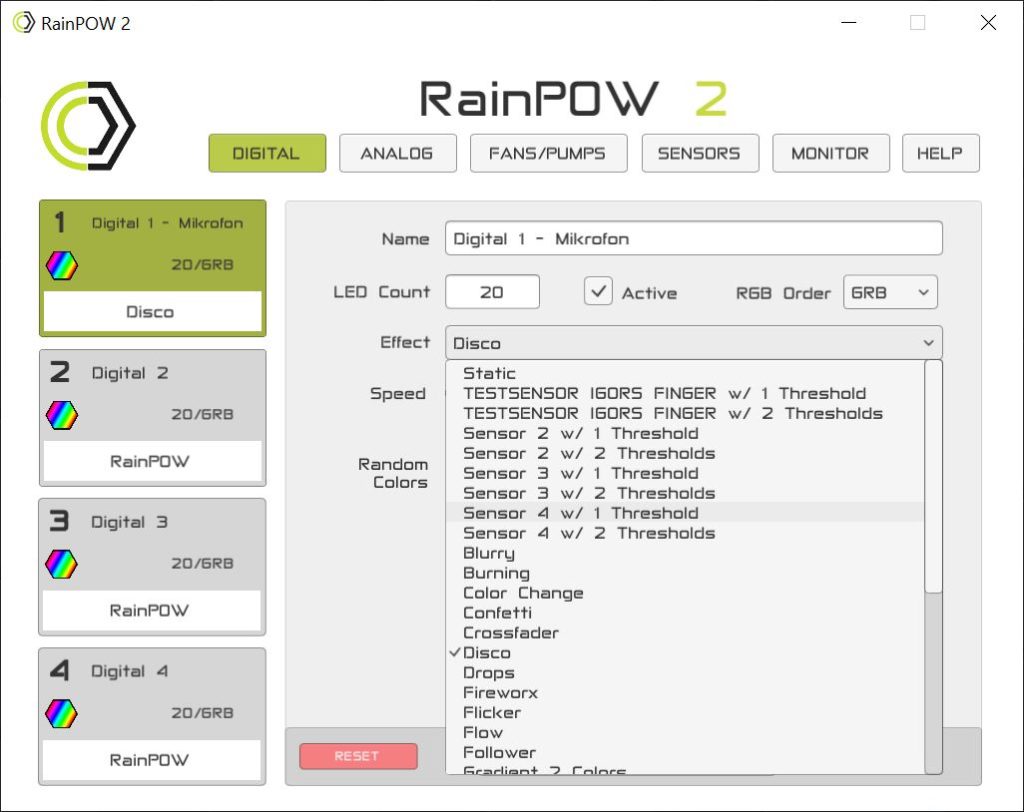
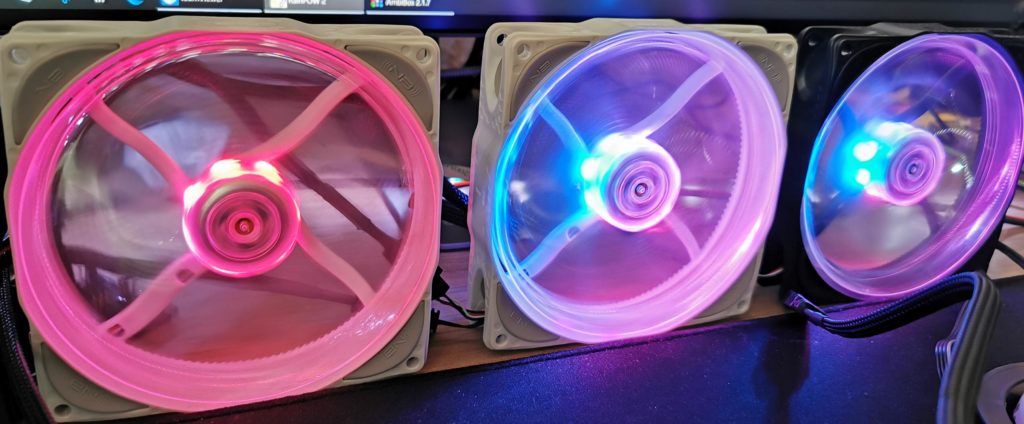
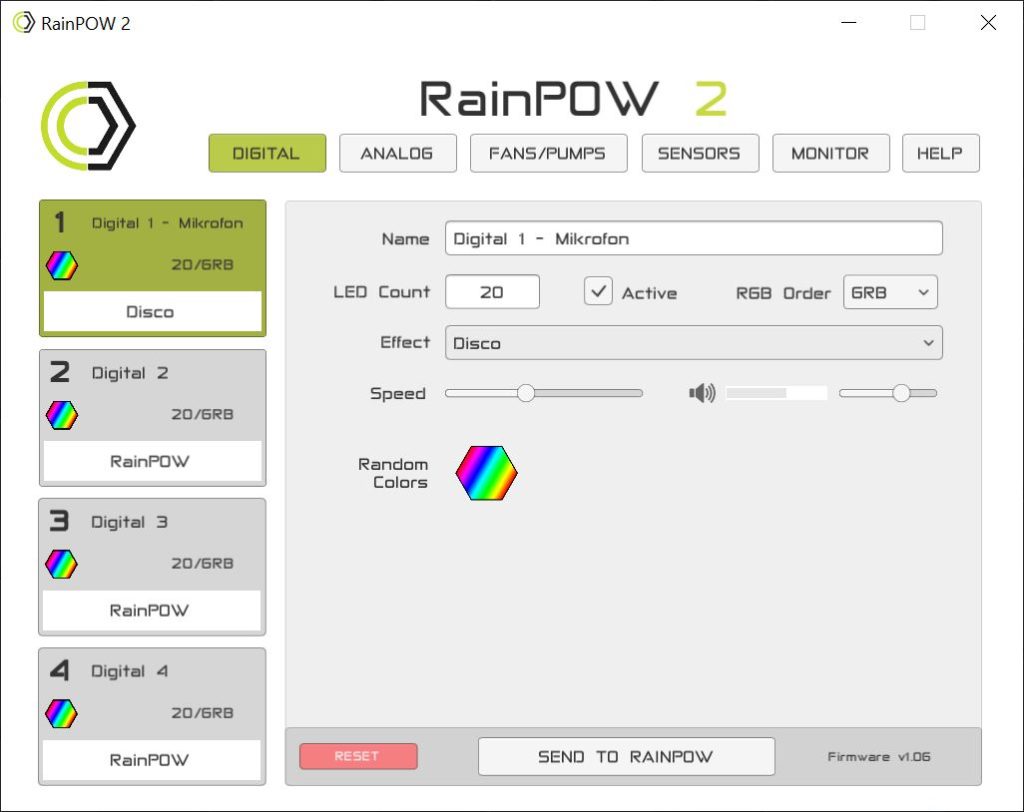
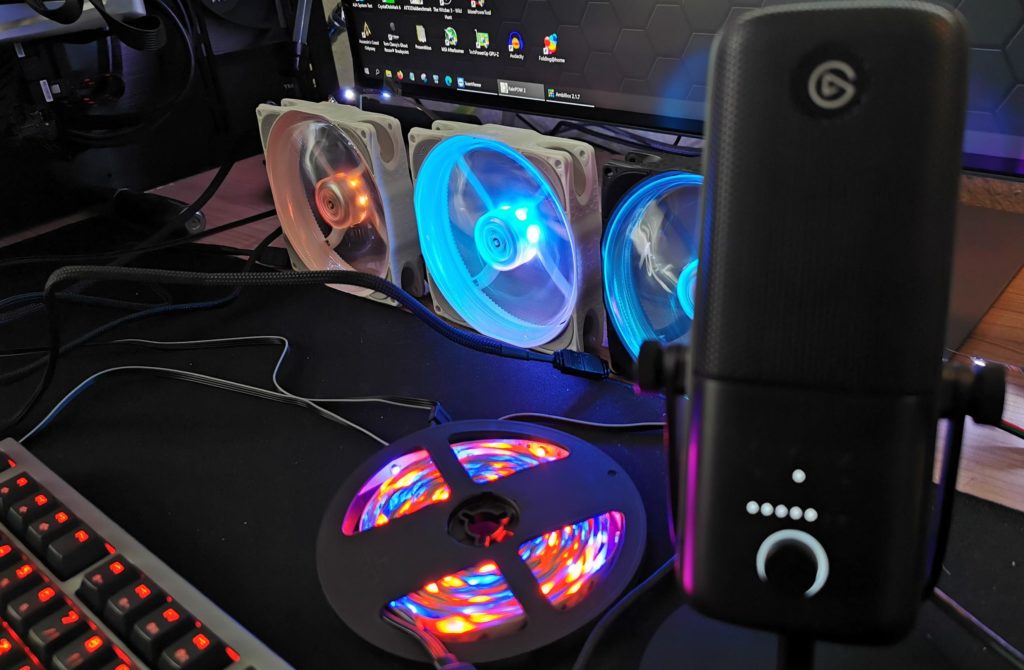
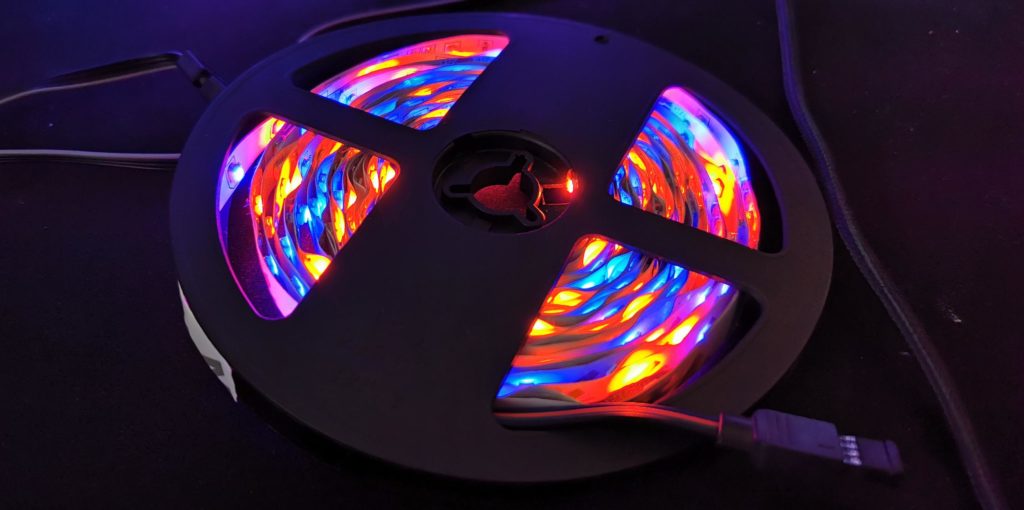
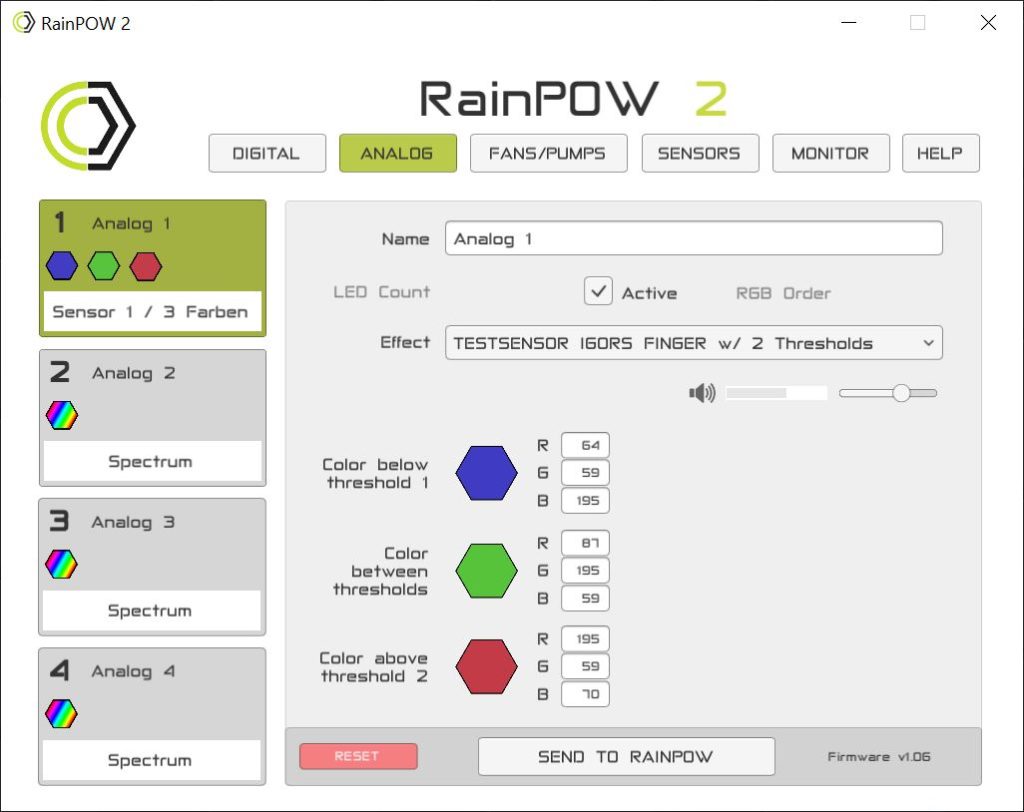


















Kommentieren